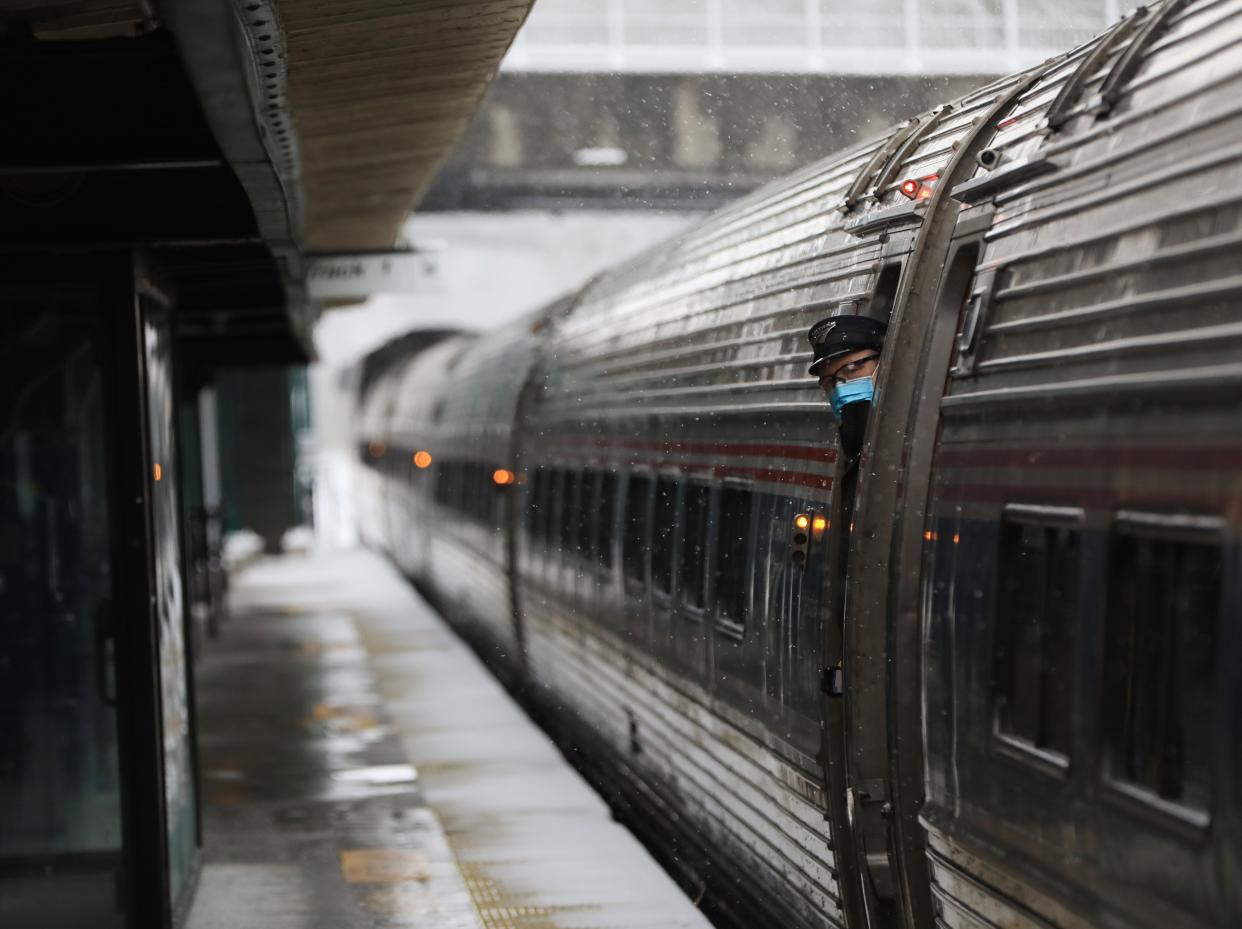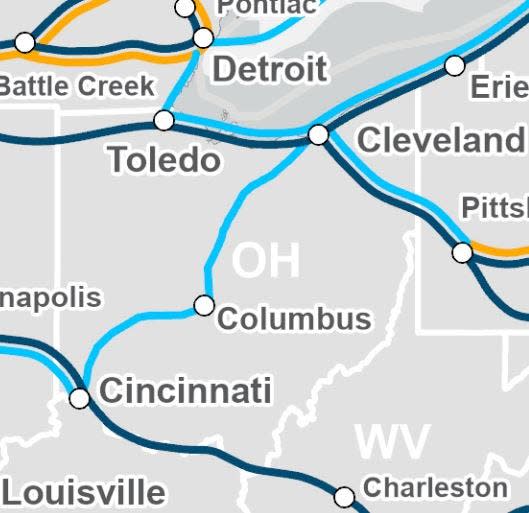Ricksecker: Ohio must move past '1960s highway-only mentality' and embrace Amtrak service

In a July 12 opinion piece, I described the terrible condition of transportation in Ohio. The handful of trains that serve Ohio stop in the middle of the night. Greyhound bus service is unreliable and unpleasant. Buses often break down en route. Bus stations, if available, are filthy and disorderly places.
More: Opinion: It is awful to get around Ohio by plane, train or bus
Left stranded are hundreds of thousands of people who can’t drive, shouldn’t drive, or don’t want to drive. Those who don’t want to drive include many of the educated and entrepreneurial people Ohio badly needs to compete economically with the rest of the country.

While other states move forward with ambitious transportation projects, our state is stuck in a 1960s highway-only mentality. That mentality risks economic stagnation because Ohio is an outlier.
For example, eight states between Boston and Washington, D.C., are teaming up with Amtrak to spend billions of dollars to improve northeast corridors trains that currently travel at 120 miles per hour between Washington and New York and up to 150 miles per hour between New York and Boston.
More: Greater Columbus Convention Center under consideration as Amtrak station site
Pennsylvania spent $146 million in the late 2000s to electrify a rail line between Philadelphia and Harrisburg where state-funded trains now run at 110 miles per hour. 2 New York State recently built five beautiful new upstate train stations and state-funded trains there now travel at speeds up to 110 miles per hour.

In the southeast, Virginia has committed $3.7 billion to high-speed rail service from Washington to Richmond.
That price tag is a bargain.
Virginia would have needed to spend $12.5 billion to add one highway lane in each direction on I-95 for only 50 miles and determined that additional highway capacity would only lead to more congestion.
Most pertinent to Ohio is the Midwest Compact, an effort among eight states to connect to Chicago and relieve congestion at Chicago airports.
That region has been struggling with the question of whether to build a third regional airport since the 1980s. The cost — upward of $25 billion in 2022 dollars — and difficulty in finding a third regional airport location helped motivate Illinois and many of its midwestern neighbors to invest in passenger rail as a less expensive and less polluting alternative.
More: Opinion: Amtrak plan important for central Ohio
Michigan now offers 110-mile-an-hour train service on 140 miles of track between Chicago and Detroit. When the state completes upgrades to the remaining 140 miles, train travel will be able to compete effectively with air travel.
The same is true for Illinois, which recently completed rail connections between Chicago and St. Louis. Trains will soon be cleared to travel at 110 miles per hour, making train travel between these cities competitive with air travel.
California is leading the country in efforts to offer fast, convenient options to driving. Its high-speed rail line between Los Angeles and San Francisco is currently under construction, with a targeted completion date of 2028.
Trains will travel at more than 200 miles per hour and eliminate much of the congestion at each city’s airport. That service will compliment an extensive rail network funded by California.

Maine, Vermont, New Hampshire, Connecticut, Massachusetts, North Carolina, Oklahoma, Wisconsin, Missouri, Oregon and Washington are all providing state support to fund train service and rail improvements.
Although their investments are incremental, the improvements to Amtrak service are no less appealing and are drawing significant increases in ridership.
More: Amtrak expansion would include passenger rail service in Columbus again
Additionally, Louisiana, Mississippi and Minnesota have all committed to making rail investments and funding service.
The Ohio legislature needs to step up to the plate and provide financial support for more than just highways. Transportation options, like other amenities, will not only help Ohio compete with other states for jobs and people.
It will provide mobility for its citizens who cannot or should not drive, and providing mobility is a basic government function.
Cleve Ricksecker led the launch of the Capital Crossroads Special Improvement District more than 20 years ago and is the former executive director of the Discovery Special Improvement District.
This article originally appeared on The Columbus Dispatch: Opinion: How can Amtrak service help Ohio compete with other states?

